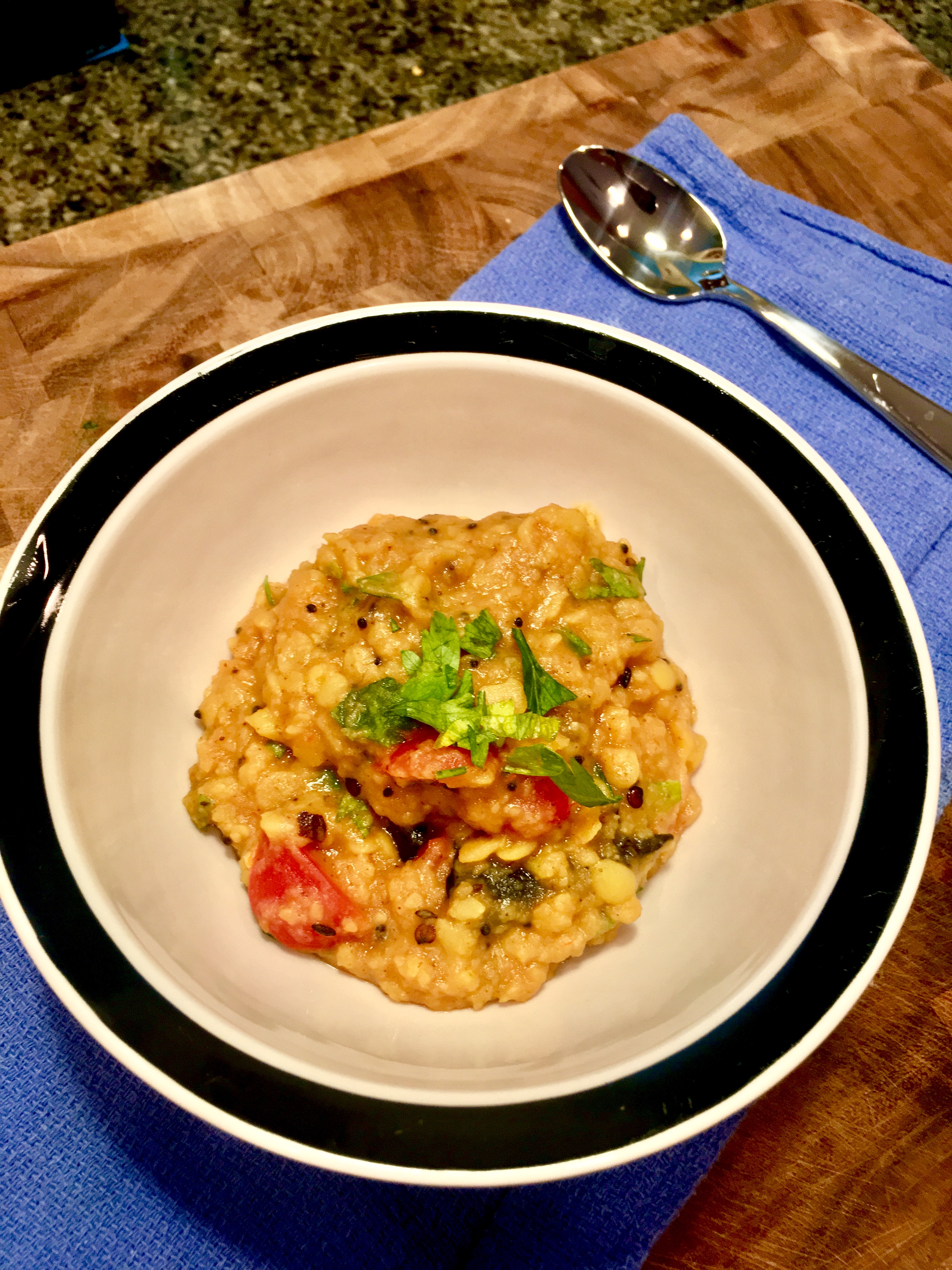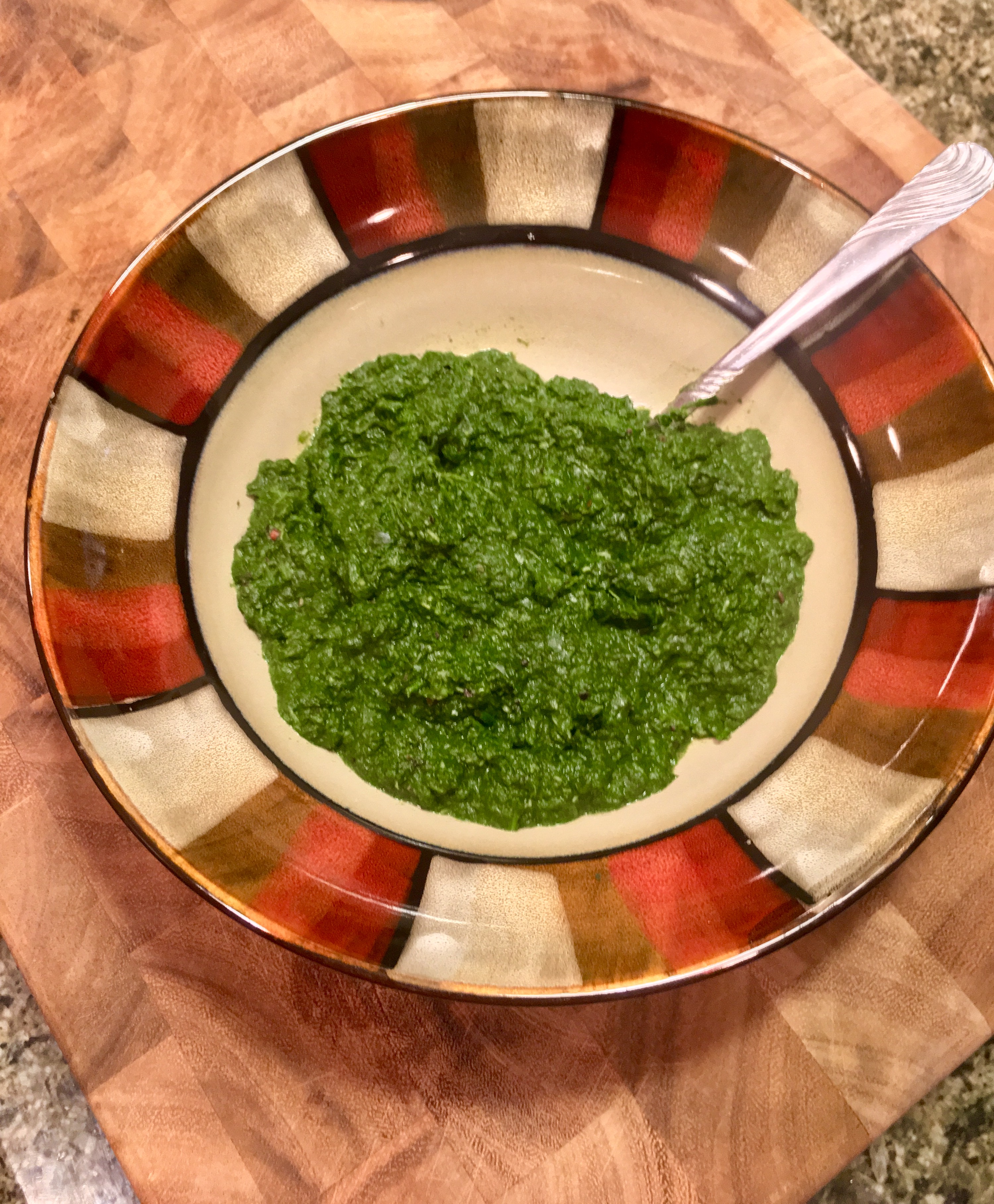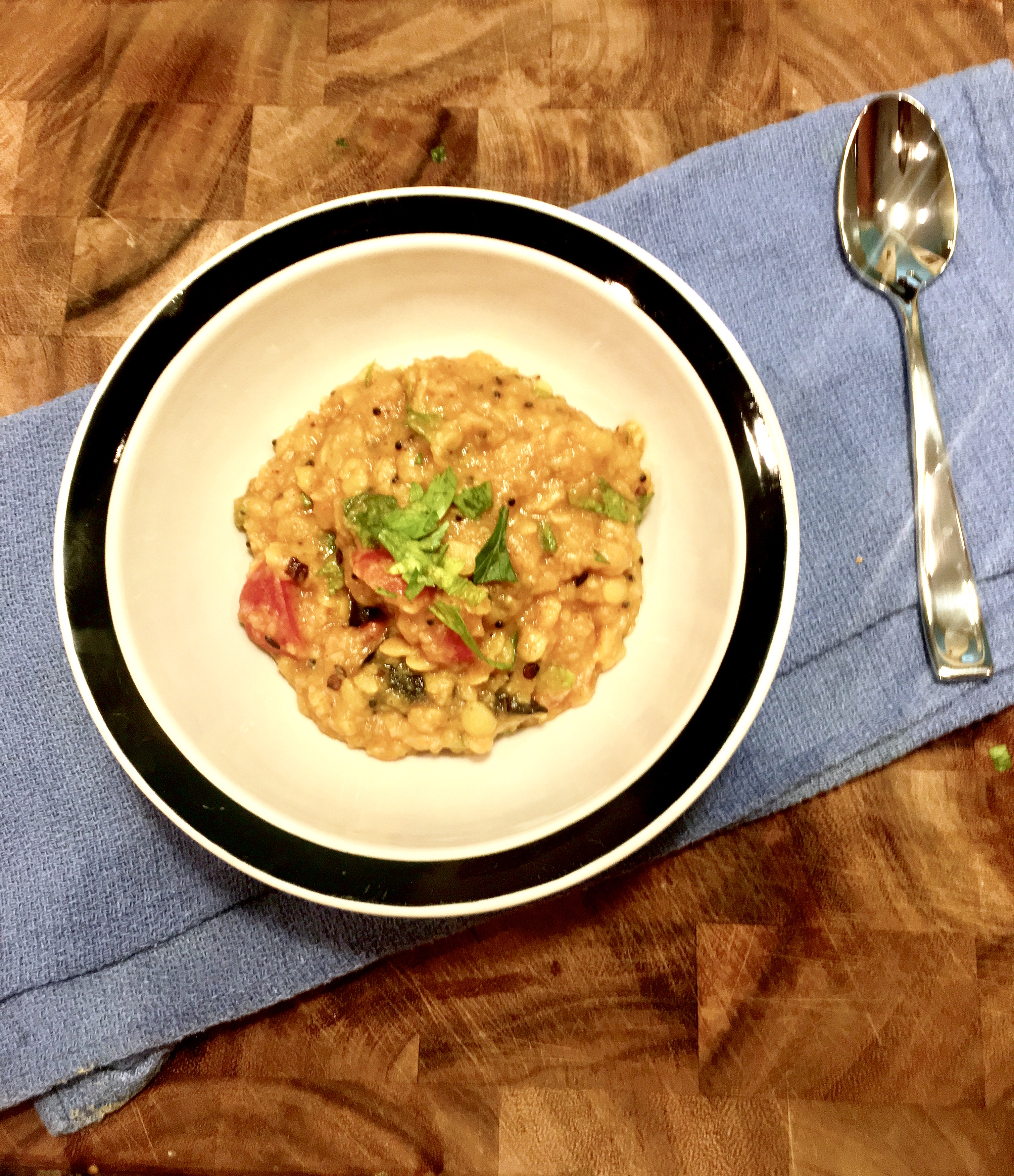21-Day Challenge – Relying on My Roots for Comfort

It’s Day 3 of my personal 21-Day Challenge, and I must say, my Indian roots have helped keep me satisfied and sane.
On Day 2, Tuesday, when I came home from work, I had to restrain myself from inhaling a box of Hot & Spicy Cheez-Its. The thought of eating another raw salad after all the raw veggies I’d consumed all day was just indigestible.
Thankfully, I always have a stash of frozen spinach in my freezer and coconut powder in my pantry to make a quick keerai poricha kootu, or a south Indian dish of spinach ground with coconut, mustard seeds, cumin, red chillies and hing. It was a smart decision, since I felt like Popeye afterwards and was able to complete my required workout, this time a 30-minute treadmill run along with weighted squats, standing and reverse flies with dumbbells, and crunches.

Before you deride me for using a frozen ingredient, one thing to note is the nutrients and benefits of frozen spinach are still comparable to fresh spinach, according to the American Institute of Cancer Research. In fact, in some cases, fresh spinach can wilt in your fridge over days, causing it to lose its folate content, making frozen spinach the better choice since it’s flash-frozen and its nutrients retained for the most part, per Livestrong.com

Since I’ve cut out carbs and most fats, and I’m already vegetarian, I’m trying to keep my meals interesting and fulfilling, so my experience making simple Indian dishes is coming in handy. There’s only so much raw food I can take, and bland steamed veggies just won’t suffice. I’m a brown chica, and I need some spice.
That’s why on Saturday, in preparation for the challenge, I was filling up on cabbage poriyal, which I sauteed/steamed in a pan with mostly water, a teaspoon of oil and which I then seasoned with mustard seeds, hing, and curry leaves. It was so delicious that I wasn’t even able to leave any for leftovers.

Today, for wifey work-from-home-Wednesday, I cooked some yellow split pigeon peas, tomatoes, curry leaves, coriander and cilantro to make a flavorful dal that kept me satiated all day.

I feel like most people think of Indian food as heavy because of the rice, naan, ghee, cashews and heavy cream that can be found in many dishes served at restaurants. However, on a day-to-day level, when you exclude the rice and breads, what Indians eat at home are meals full of healthy ingredients like lentils, spices such as turmeric, cumin and ginger, and a plethora of vegetables rich in vitamins.
These dishes have been lifesavers for this challenge, as they are vegetable-based, but still tasty. It’s clear that I’ll be cooking more Indian foods through the next few weeks.
And that makes sense, right? Given a challenge or unfamiliar situation, we like to revert to our roots and rely on what we know to help us feel a little more comfortable. Since almost everything else about this challenge makes me feel uncomfortable, at least there’s a warm bowl of dal in which to find solace at the end of the day.
5 Comments
Comments are closed.











Recipes?
Omg. Good point! I will post the recipes tomorrow! I typically eyeball the amount of ingredients for these dishes, but i should have included some instructions on how to prepare them. Definitely will do
Cabbage recipe is up on the blog: http://wp.me/pxcTx-1uX
Cabbage recipe is up on the blog!: http://wp.me/pxcTx-1uX
Spinach recipe is up! http://wp.me/pxcTx-1ts